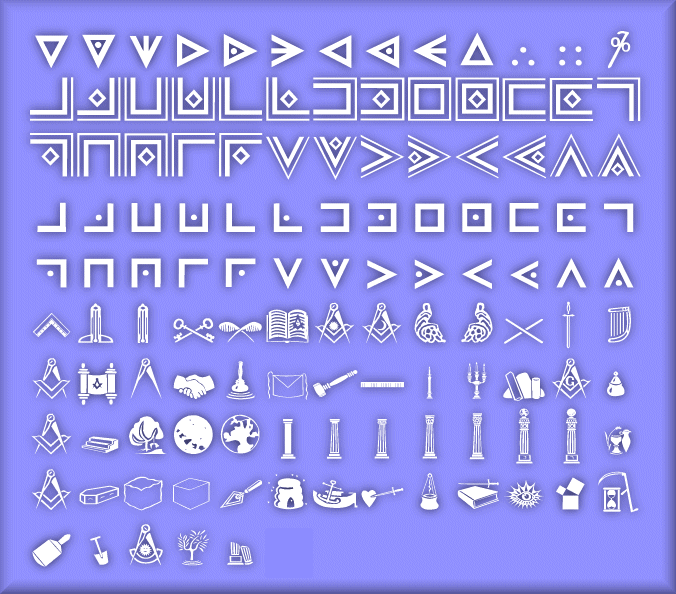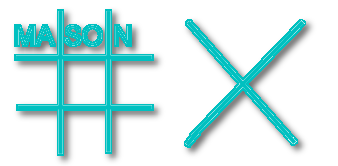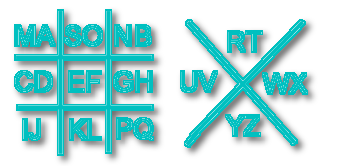Masonic Cipher &
Symbols
From Oakland-Durant-Rockridge Lodge #188 Website
Press here
to download the FAM-Code Font
FAM-Code Creator: Peter W. Pedrotti, PM

Masonic Cipher & Symbols©
contains the Masonic "poundex" substitution cipher characters in upper and lower
case, as well as the numerals and a complete set of common punctuation marks
(not shown). The symbol set includes the jewels of the officer line and all the
symbolic emblems explicated in the three Degrees of Blue Lodge Masonry (F&AM
of California), except the very most esoteric.
There are two related versions of the Masonic
cipher. The version used here is that explained informally to Blue Lodge
members, and is not an official part of any authentic Masonic teachings in the
Grand Lodge of California. The other is sometimes taught in Royal Arch Masonry,
and differs in that the first half of the alphabet (A-M) is assigned to the
plain outlines, while the second half (N-Z) are the dotted characters. It should
be noted that as simple "substitution ciphers" neither provides more than a
superficial cryptographic security.
The security afforded by
this cipher is enhanced somewhat by combining it with a simple, separately
communicated keyword, as follows:
Select a keyword of any
length, for example 'MASONS'. Use a different keyword for every message, because
this will still be a substitution cipher, even though the specific substitutions
change. The longer the message using the same keyword, the easier it is to
decode a substitution cipher without knowing the keyword.
Write the
unique letters of the keyword in the "poundex" pattern (in our example, just M,
A, S, O and N, since 'S' appears twice in 'MASONS'):

Then continue to fill
in the pattern with the remainder of the alphabet, remembering not to repeat any
letters of the keyword:

Now, for each letter in
the pattern, the substitution symbol is the outline of the cell, with a dot for
the second letter in each pair:
M =
 H = H =
 X = X = ,
etc. ,
etc.
back to top |
![]()








 H =
H =
 X =
X = ,
etc.
,
etc.